On the Agenda 2024: State and local issues to watch
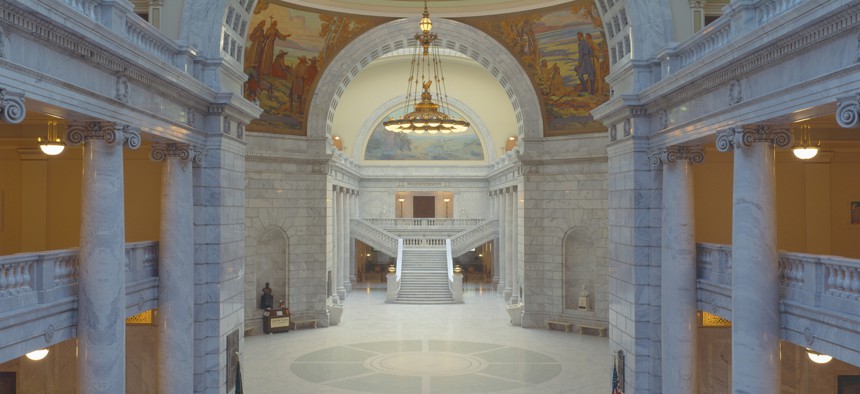
VisionsofAmerica/Joe Sohm
Here are the 10 biggest challenges government leaders will confront in the new year.
This year, we’ve watched the clock run out on the country’s pandemic response. One by one, some of the last COVID-era relief benefits came to an end. 2024 then, in many ways, is shaping up to be a return to normal. With Congress gridlocked, domestic policy solutions will again be left up to states and localities.
It started in April when states began the so-called Medicaid unwinding—the mammoth task of reevaluating the eligibility of roughly 93 million people. From there, it rolled into May when the federal public health emergency expired and funding for rental assistance that saved millions of households from eviction dried up. An estimated 1 in 3 children enrolled in child care programs supported by American Rescue Plan Act grants were expected to lose their spots once funding expired at the end of September. And in October, nearly 30% of Americans with some college education resumed monthly student debt payments after a three-year plus hiatus.
Without the pandemic era padding, safety net programs will have bigger holes that more people will fall through. It is estimated that 1 in 5 Medicaid enrollees will have been kicked off the program by the end of May. Even though states are reporting that applications are up for the Special Supplemental Nutrition Program for Women, Infants, and Children, or WIC, officials say they will have to waitlist applicants unless Congress approves additional funding.
Most states, meanwhile, are expecting a return to more “normal” fiscal conditions in the next budget cycle after experiencing the two fastest growing years on record, according to the National Association of State Budget Officers. States anticipate that general fund revenue in fiscal 2024 will decline modestly.
“Fiscal 2024 revenue performance has been a bit more mixed, though most states able to report indicated collections were either meeting or exceeding estimates for the fiscal year to date,” according to NASBO’s Fall 2023 Fiscal Survey of the States. “Numerous factors are driving variation in revenue performance across states, including differences in tax structures, prevalent industries, demographic shifts, tax policy changes, and the timing of one-time revenues.”
But, of course, 2024 won’t entirely be a return to a pre-pandemic normal.
Money will still be flowing from federal coffers into several big infrastructure projects, most notably nationwide broadband expansion. Workforce shortages will persist, particularly in the technology field, as state and local governments weigh remote, hybrid and return-to-work policies. And states and localities will continue to contend with inflation, even though it dropped to 3.1% year-over-year in November. It will impact budgets, with many looking to tech consolidation to do more with less.
And there are big issues looming, most notably an aging population. Numbers from the Census Bureau earlier this year show the U.S. population is older than it's ever been, with the nation's median age now over 38. As Americans age, health care costs will grow, as will the need for benefits and assistance from Medicare and Social Security. At the same time, an aging workforce could cause even more worker shortages in the years to come.
This is all happening in a presidential election year, a time when big policy efforts usually take a back seat to political considerations. At least, that’s the conventional wisdom. But many of the issues confronting states, counties and cities are simply too important or too timely to wait out an election year or the political paralysis that continues to grip Congress.
Here are 10 items on the agenda that will likely draw a lot of attention in 2024.
- Artificial Intelligence
- Homelessness Among Older Adults
- Elections
- The Rise of New Opioids
- Passenger Rail
- Social Media
- Mental Health
- Electric Vehicles
- Clean Energy Buildings
- Affordable Housing
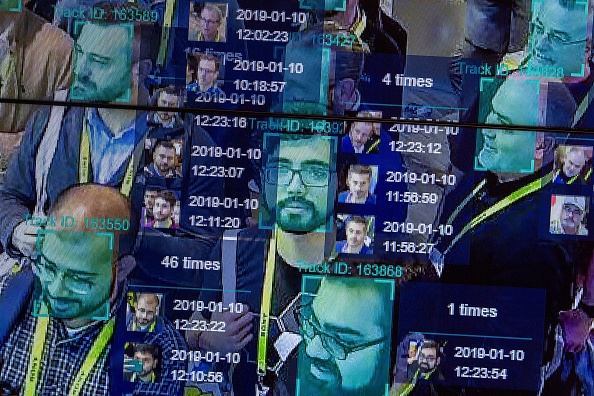
Artificial Intelligence
Artificial intelligence saw tremendous growth and hype in 2023, and experts expect that 2024 will be no different as government agencies implement the technology.
The number of pilot projects and initiatives using generative AI, in particular, should accelerate next year.
“From a government standpoint, [generative AI] really turns creators into curators,” said Ben Sebree, vice president of research and development and technology at CivicPlus. “It creates this really great opportunity for us to generate a first draft of something, and then apply our industry expertise, whether as a software vendor or as an employee of a local government, and turn it into a final draft of something that's ready to be published.”
The drumbeat for state and local governments to implement policies around the technology’s responsible use will also intensify.
But implementation efforts may be impeded by security concerns, according to Miten Marfatia, CEO of software company EvolveWare."This hesitation will significantly limit the near term impact that GenAI will have on government modernization processes,” he wrote in an email, “given that any GenAI-enhanced modernization technology would require massive amounts of legacy code that reside within these organizations to properly train a model and thus achieve accurate and useful results."
Malicious actors will also look to take advantage of new generative AI tools next year. Matt Waxman, senior vice president and general manager for data at Veritas Technologies, predicted that 2024 will see the first ever end-to-end AI-driven autonomous ransomware attacks.
“Beginning with robocall-like automation, eventually AI will be put to work identifying targets, executing breaches, extorting victims and then depositing ransoms into attackers’ accounts, all with alarming efficiency and little human interaction,” Waxman said. —Chris Teale

Homelessness Among Older Adults
Last week, the U.S. Department of Housing and Urban Development released results from its 2023 point-in-time count of people experiencing homelessness on a single night in January, and for the first time ever, it included detailed data about older adults. The change reflects a growing concern among officials and advocates about the swelling number of adults over 55 facing housing instability.
According to the report, homelessness nationwide increased about 12% between 2022 and 2023, by about 70,650 people. In total, about 20% of adults, or more than 98,000, are between ages 54 and 64, and another 8% are older than 64.
“Anecdotally we were seeing an uptick in the number of older adults in the homeless services system, but we really need the data to be able to make the case for more and different resources for that particular population,” said Ann Oliva, CEO of the National Alliance to End Homelessness. The alliance and other advocacy groups have long pushed for the point-in-time count to more closely track the number of older adults.
There are two factors driving the increase, Oliva said. First, there are people who are experiencing chronic homelessness who are getting older. Then there are older adults who are becoming homeless for the first time. And while skyrocketing rents are difficult for everyone, they’re especially challenging for older adults who are often on a fixed income and have health or mobility issues.
Safe and accessible housing for older adults is a concern among many in the housing field, especially as the number of adults over 65—which is currently about 17% of the total U.S. population—is expected to double by 2040. Fewer than 4% of homes in the U.S. have the features most critical for seniors including single-floor living, no-step entries and wide doorways and hallways.
Efforts to support senior-friendly housing benefit more than just the aging population. As older adults look to downsize, their struggles mirror those faced by many young people wanting to purchase a small home, said Kathryn Reynolds, a principal policy associate with the Research to Action Lab at the Urban Institute.
“This is getting to an issue that we see just generally, that starter homes, condos, smaller homes are not being built as often because they're not as profitable to developers,” Reynolds said. “I think it would be really important to think through how to get some of that housing stock back online, especially for folks that are wanting to downsize or get into something that's more amenable as they age.” —Molly Bolan

Elections
Election Day this year mostly went off without a hitch as voters in 10 states went to the polls to decide crucial races and ballot initiatives. But the relative peace of 2023 appears poised to give way to concerns about poll worker safety and big technological threats next year.
Unfounded claims that the 2020 presidential election was “stolen” led to harassment of and death threats against election administrators across the country. Three years later, many still fear for their safety and worry about acts of violence against poll workers.
Former Pennsylvania Secretary of the Commonwealth Kathy Boockvar, who received threats after the 2020 elections, has founded an organization that works with local elections officials and law enforcement to improve safety at election sites. She had “hoped against hope” that election deniers’ false claims would have died down, but “unfortunately, that's not what’s happened.”
The fear has led to an exodus of election officials. A poll by the Brennan Center for Justice last April found that many have left and many still plan to go, a finding that is also backed up by research from the political reform group Issue One. In 11 Western states roughly 40% of the chief local elections officials are new to the job since 2020, the study found.
“Ensuring elections are accessible, secure and accurate requires trained, dedicated, knowledgeable people,” the Issue One report stated. “When local election officials leave these critical positions, the costs to institutional knowledge and running elections are real. Losing experienced people costs us in countless ways.”
Those left behind will be facing big technological threats.
Already state and local officials have gotten a preview of how cyberattacks and artificial intelligence may affect elections next November. Last year’s midterm elections, for instance, saw the Mississippi Secretary of State’s website crash after what officials called at the time an “abnormally large increase in traffic volume due to [denial-of-service] activity.”
Meanwhile, the 2024 presidential election has already seen an influx of AI-generated content, including from the Republican National Committee reacting in April to President Joe Biden’s reelection announcement. The video features AI-created images or deepfakes depicting a Biden victory, followed by a series of imagined reports about international and domestic crises that the ad suggests would follow his reelection in 2024.
Samir Jain, vice president of policy at the Center for Democracy and Technology, warned during a recent webinar of a “really difficult information environment,” given that social media platforms and governments have fewer resources to dedicate to fighting misinformation, and local officials’ reluctance to be seen as infringing on the First Amendment.
“The fact that these kinds of deepfakes and generative AI content might exist also has the indirect effect of undercutting trust in authentic content, because it becomes harder for voters and others to distinguish between what's real and what's not,” Jain said. “It makes the whole information environment a little bit more difficult to navigate.”
The public is concerned too. The Institute of Governmental Studies at the University of California, Berkeley found in a recent survey that 84% of Californians are concerned about disinformation, deepfakes and AI. More than 70% said the state government has a responsibility to act to protect voters, while 87% said tech companies and social media platforms should be required to label deepfakes and other AI-generated content.
In addition to worries about AI-generated deepfakes, cybersecurity is top of mind for state and local officials as they prepare for next year. Their concern is shared by the federal government: The Department of Homeland Security’s Intelligence Enterprise Homeland Threat Assessment report said the agency expects the 2024 election cycle to be a “key event” in which cyber criminals will look to exploit networks and data used by political parties and elections officials.
Funding for cybersecurity protection remains the biggest challenge for state and local governments, even as funds from the federal government’s State and Local Cybersecurity Grant Program continue to trickle down. It reflects a continued trend of low funding for state and local election administration. —Kery Murakami and Chris Teale

The Rise of New Opioids
The opioid crisis shows little sign of slowing in the new year, and the rise of new street drugs like the synthetic opioid nitazene and the horse tranquilizer xylazine will only further complicate communities’ response to the crisis in 2024.
State and local leaders continue to urgently seek solutions. But those decadeslong efforts to curb the drug crisis are getting a big boost as states and municipalities are slated to receive more than $50 billion in opioid settlement funds over the next two decades.
How they spend those funds to manage a multifaceted crisis will be closely watched. Some communities are already spending grant money on law enforcement equipment like new body scanners and surveillance cameras, while others are putting money behind addiction treatment and recovery facilities for individuals overcoming an opioid use disorder.
Governments will continue shifting toward harm reduction strategies, as more policymakers recognize that tackling substance use disorders requires treatment-based efforts rather than punitive discipline, said Jill Rosenthal, director of public health policy at the Center for American Progress. In the new year, an increasing number of cities and counties, for instance, will use opioid funds for naloxone vending machines.
State and local leaders are especially concerned about protecting younger individuals against the opioid crisis, Rosenthal said. That means they could divert more funding to schools and universities for increased naloxone access and expanded treatment services for students. But states are still figuring out how to distribute opioid funds and will have to develop frameworks to manage the flow of opioid settlement cash.
Look for lawmakers to advance efforts to address substance use and substance use disorders through the legalization of fentanyl and xylazine test strips, expansion of recovery services like peer support specialists and the regulation of substance use and possession, according to the Association of State and Territorial Health Officials. —Kaitlyn Levinson

Passenger Rail
After a breakthrough year in 2023, state transportation officials are likely to have plenty of work to do in 2024 to facilitate passenger rail expansions.
Over the last year, the Biden administration rolled out several major initiatives to build or rebuild major rail routes, including new tunnels under the Hudson River into New York City, construction of a high-speed line in California’s Central Valley and a desert route to link Las Vegas to the Los Angeles suburbs. Meanwhile, Amtrak resolved a yearslong dispute with freight railroads over restoring passenger service along the Gulf Coast. And Brightline, a private rail company, opened a route connecting Orlando to Miami and other South Florida destinations.
But all of that activity tees up 2024 to be an even bigger year, said Joseph Aiello, the director of community engagement and organizing for the Rail Passengers Association.
States will play a big role in construction of new routes. Amtrak service between New Orleans and Mobile, Alabama, is scheduled to finally restart in the new year. A state-supported route between the Minneapolis area and Chicago will add another train.
Meanwhile, there’s plenty of planning work to do. The Federal Railroad Administration gave out grants to 69 projects in 44 states in December, which will give state and local officials the opportunity to explore expanded service and potentially qualify for bigger federal construction grants. Already, supporters of the Cascadia high-speed rail plan in the Pacific Northwest are debating whether to pursue costly but potentially transformative bullet trains or to focus on improving existing service. Colorado officials are angling for more federal resources to build a Front Range route linking the state’s biggest cities. And Illinois officials are looking for the federal government to pick up a bigger share of the tab for overhauling Chicago’s Union Station, which serves as a passenger hub for the Midwest.
Several states that didn’t get funding grants—like Iowa, Kentucky and Utah—could also be working to be included next time. “Everybody wants money for their project, right?” Aiello said. “The places that weren’t selected really need to heed the advice of: Raise your hand. The projects that got money have been in the conversation for a long time.”
Federal officials haven’t given detailed explanations of how they chose projects for grants, but it’s clear that local backing was a key factor, Aiello said. “Whether it be your mayor’s office, your city council, your congressman, your state representative, your state senator, all the way up, the more support you can have the better.” —Daniel C. Vock
.jpg)
Social Media
Social media has become a major part of the public sphere, but numerous issues have arisen in what remains a relatively unregulated space. The unending youth mental health crisis has been blamed in part on the platforms, while TikTok remains a potential national security risk and leaders at all levels must grapple with exactly when speech can be restricted.
In 2023, states dipped their toes into the regulatory pool with age restrictions and outright bans on certain platforms, among other approaches. And in 2024, those efforts will likely grow as states try to address these concerns, even as they are forced to navigate lawsuits and court decisions.
Already, differing judicial decisions on the fate of TikTok in two states this month brings into question the legality of such bans.
Texas, for instance, will charge ahead with its ban on Chinese-owned TikTok on government devices and networks, after a federal judge recently dismissed a legal challenge against the law. District Judge Robert Pitman said in his ruling that the ban is a “reasonable, viewpoint-neutral restriction on a nonpublic forum.”
But Montana’s proposed statewide ban is in limbo after another federal judge granted a temporary injunction against it on First Amendment grounds.
Concerns that TikTok and its parent company, ByteDance, may put sensitive user data, like location information, into the hands of the Chinese government do not appear to be subsiding. Despite the conflicting rulings, states may likely opt to continue testing out approaches to banning its use in the interest of protecting residents.
There are several big cases before the U.S. Supreme Court in 2024 that could impact how states regulate social media. Justices will rule on a pair of cases that will decide if a public official can block critics on social media, and are set to hear arguments over Florida and Texas laws that seek to curb alleged censorship of conservative views on the platforms.
Meanwhile, states are still trying to figure out how to legislate social media’s impact on young adults.
Utah’s restrictions on minors’ use of social media are set to go into effect on March 1 unless a court intervenes. Open internet advocacy group NetChoice just filed a lawsuit to stop it. The restrictions require platforms to verify users’ ages, get parental permission before minors’ use their apps and allow parents to control content they view, among other rules
A multistate lawsuit against Meta will continue its journey through the legal process next year.
But some observers are not convinced of its merits, however, in a potential warning for the year ahead. While efforts to protect children may seem noble, they argue, blaming platforms for all the ills that young people face in society is not likely to succeed.
“The real problem here is that this is kind of a tech scapegoating for the failures of the government itself across the board,” Carl Szabo, vice president and general counsel at NetChoice, said during a recent webinar. —Chris Teale
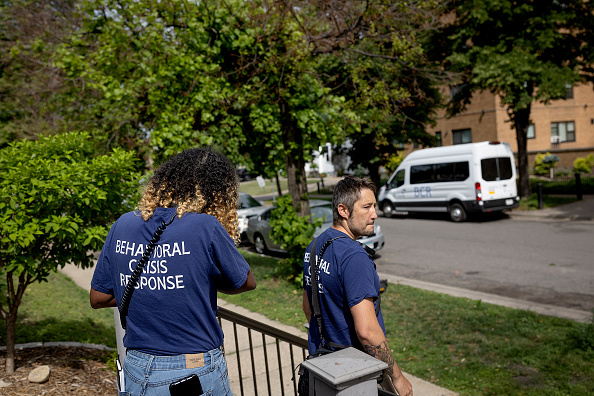
Mental Health
Growing homelessness, a drug overdose epidemic, rising suicide rates among young adults, violent crime, crowded jails—efforts to address these issues increasingly focus on mental health. And in 2024, the issue will be front and center for many state and local governments.
Already, significant investments have been made in recent months toward improving and expanding mental health services across the country.
In late September, North Carolina invested $835 million in mental health care. A few months before that, Montana Gov. Greg Gianforte signed a bill to put $300 million toward a variety of mental health services including expanding intensive and community-based behavioral health care services across the state. That was the largest investment of its kind in state history.
The governors in New York and Texas made billion-dollar investments in mental health care this year.
“We’re seeing record breaking investments across multiple states,” Stephanie Pasternak, the director of state affairs at the National Alliance on Mental Illness, told Route Fifty earlier this month. She added, “Mental health is the bipartisan issue of our time.”
The trend of investments is expected to continue into the new year.
In California, a bond issue that will devote nearly $6.3 billion to mental health will get a vote in March. If passed, the money will help build new behavioral health housing and treatment settings across the state.
Kate Blackman, vice president of policy and research at the National Conference of State Legislatures, said at an event that kicked off the group’s 2024 forecast that a survey of 30-plus leaders nationwide found that mental health ranked high on the list of significant issues states expect to tackle next year. She said that concerns surrounding the topic are being heard across many sectors, including education, criminal justice and crisis response.
The Association of State and Territorial Health Officials also said that they expect to see continued support from states to operate the national 988 suicide and crisis helpline. —Elizabeth Daigneau
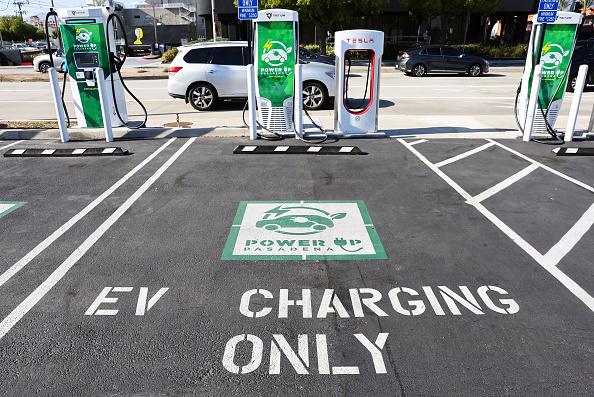
Electric Vehicles
Two years after Congress passed an infrastructure bill that included $7.5 billion to build electric vehicle chargers across the country, the first federally funded charging stations came online in December.
The debut of the EV fueling spots in New York and Ohio, though, likely marks the beginning of a frenzy of activity to support the next generation of vehicles and encourage their adoption.
The most immediate concern for states, of course, is to build the charging stations along major interstate highways that the federal government is paying for through $5 billion from the 2021 infrastructure law. Their eventual goal is to build 500,000 electric hook-ups. That’s a major undertaking for state transportation departments because of the myriad rules they have to follow to install the chargers.
Separately, local governments are competing for another $2.5 billion to install chargers in overlooked areas, particularly in underserved and disadvantaged communities.
State officials will also need to decide how quickly automakers must phase out gas-powered vehicles. They have two options. The Biden administration wants two-thirds of new vehicles sold in 2032 to be electric. But California Gov. Gavin Newsom has set out an even more aggressive timeline: completely phasing out gas-powered vehicles by 2035. States can either follow the federal standard or adopt California’s. Eleven states have already adopted the California regulations, but more could follow. In Connecticut, for example, Gov. Ned Lamont, a Democrat, unsuccessfully tried to join California’s more aggressive timeline. He’s signaled, though, that he will push the issue again in the spring.
Another issue likely to confront state lawmakers is the lost fuel tax revenue resulting from more people switching to electric vehicles. States depend on taxes on gasoline and diesel fuel to pay for road upkeep and construction, but EV drivers don’t have to pay those taxes. Nearly half of states now impose higher registration fees to make up the difference, and at least six states have passed laws imposing taxes on public EV chargers. —Daniel C. Vock

Clean Energy Buildings
Clean energy will be a priority in all communities working to lower greenhouse gas emissions as they reckon with worsening climate change impacts. And while some governments have embarked on ambitious projects like offshore wind this past year, more state and local leaders will be turning their attention to increasing building energy efficiency in 2024 while weaning communities off fossil fuels.
Policymakers are recognizing that “most of the buildings that are still going to be around in 2050 are already built,” said Mark Kresowik, senior policy director at the American Council for an Energy-Efficient Economy. They won’t be able to meet climate goals or help households save energy if they “aren’t focused on existing buildings more so than new buildings.”
Cities will likely look to replicate Seattle and Detroit, which have recently introduced policies requiring certain buildings to monitor and disclose their energy use levels.
Weatherization and electrification projects are also gaining traction. In September, for instance, 25 governors pledged to install 20 million heat pumps across the country by 2030.
States and localities will continue leaning into federal funding opportunities like the Inflation Reduction Act to meet their energy goals in 2024, Kresowick said. They’ll get help from the Energy Department, which is slated to start administering rebates for home energy efficiency and electrification projects under its home energy rebates program. They’ll also be able tap into the Biden administration’s recently announced $530 million in grants to support governments’ adoption and implementation of new building codes and building performance standards.
Governments recognize vulnerable populations face the highest energy burden, Kresowik said.
As more homes and buildings switch from gas to alternative energy sources, policymakers will also consider the financial impact of the clean energy transition on utility customers and prioritize energy efficiency measures in low-income or historically underserved areas. —Kaitlyn Levinson
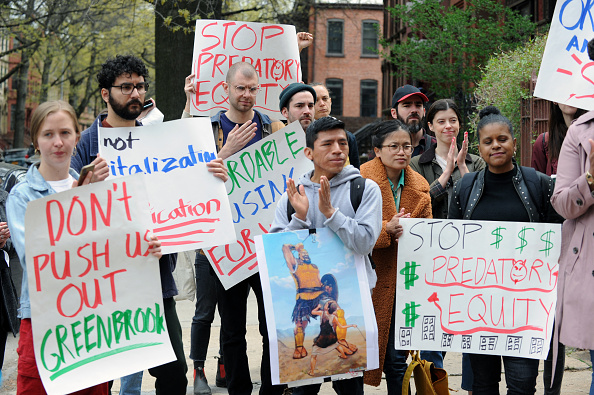
Affordable Housing
Nationwide homelessness rose 12% between 2022 and 2023, and more people experienced homelessness this year than at any time since the U.S. Department of Housing and Urban Development began keeping track in 2007. Federal officials pointed to skyrocketing housing costs as a primary driver behind the increase, and with a shortage of nearly 7 million affordable homes nationwide, it’s going to take some time before households see those expenses fall.
Even worse, $46 billion in pandemic-era federal Emergency Rental Assistance funding dried up earlier this year, making it tougher for many households to make monthly rent payments. Some cities, including Las Vegas and Houston, are seeing eviction rates at more than 40% above pre-pandemic rates, according to the Eviction Lab.
All that to say, the housing crisis will continue to be a major challenge for cities and states, especially as the federal government is unlikely to consider major increases to housing investments.
“I do feel like there's been, at the state and local level, more movement to fund affordable housing production and preservation,” said Kathryn Reynolds, a principal policy associate with the Research to Action Lab at the Urban Institute.
With less federal support for affordable housing, “I do think that more and more localities are willing to think about using their own sources of local funds for housing production,” Reynolds said. She pointed to Seattle, where voters last month approved a citywide levy that is expected to raise nearly $1 billion for affordable housing.
Some states are making big moves, too. In Massachusetts, for instance, Gov. Maura Healey is pushing the legislature to approve her $4 billion Affordable Housing Plan Act. Nearly half the funding would target affordable housing production and preservation, while the rest would support initiatives like housing-specific tax credits and policy changes.
Deep-pocketed investors are also reducing options for potential homeowners. Big corporations have been buying up single-family homes since the Great Recession, but cities, states and even Congress are pushing back. Earlier this month, Congressional Democrats introduced the End Hedge Fund Control of American Homes Act, a bill that would ban hedge funds from owning single-family homes and require that they sell 10% of their stock to families annually for a decade.
Nationally, investor-owned homes make up only a small share of the total number of homes. But in some neighborhoods, up to 30% of homes are owned by major investors, limiting homeownership opportunities for everyday families.
In Ohio, though, legislators are considering a bill that would give individual households the opportunity to bid on foreclosed properties before investors get a chance to purchase them.
Despite the many housing challenges the country is facing, Reynolds said she feels optimistic looking toward the future.
“Just the fact that housing is becoming more of a conversation, that you’re hearing [about] nationally as well as locally … is helpful,” she said. “I do think that over time, that creates more political pressure to do something about it.” —Molly Bolan





